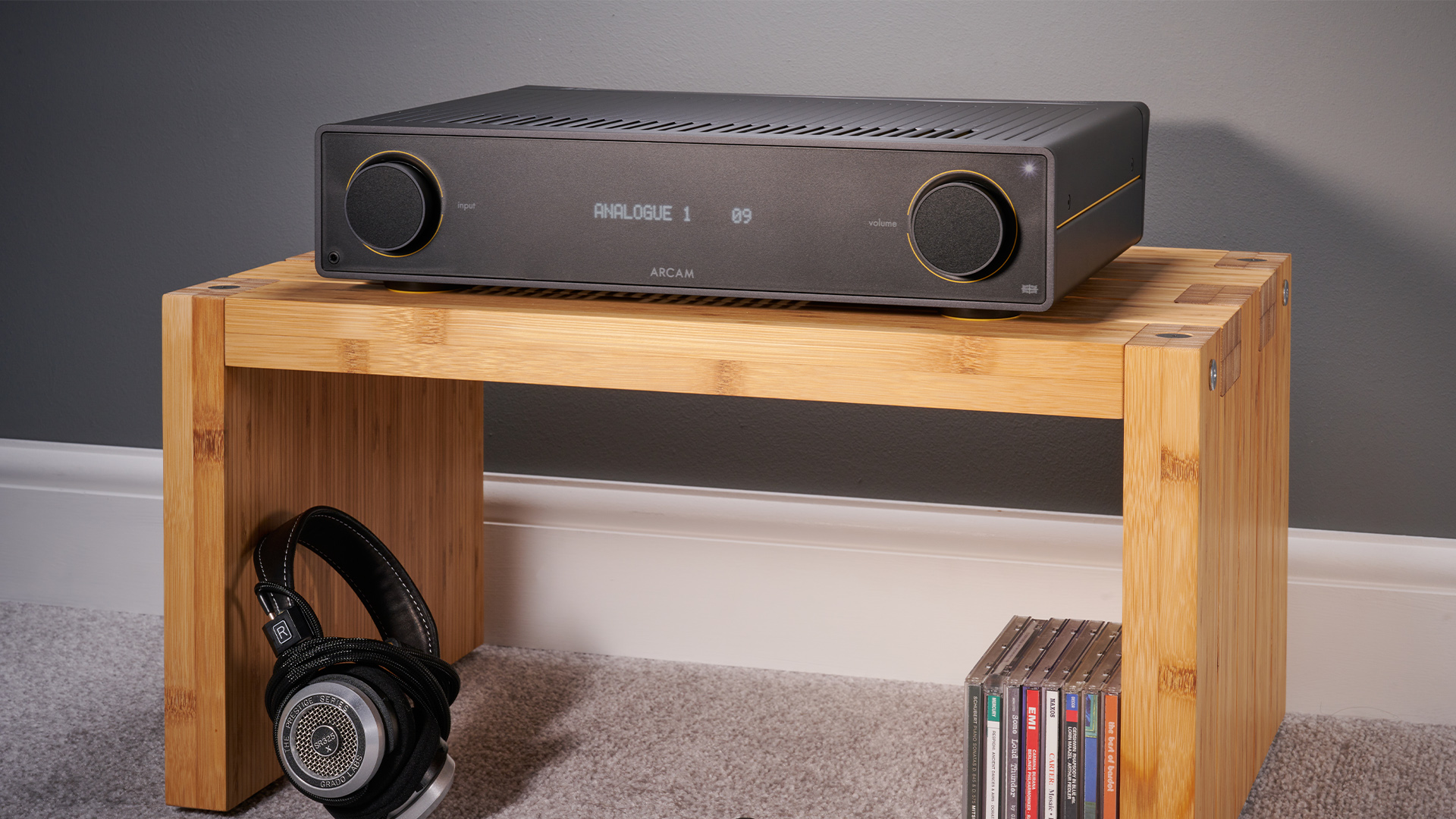What Hi-Fi? Verdict
Arcam’s A15 is well-built, packed with useful features and most importantly, sounds great
Pros
- +
Impressive clarity and punch
- +
Expressive dynamics and agility
- +
Great spec list
- +
Well built
Cons
- -
Display could look crisper
- -
Missing a USB input
Why you can trust What Hi-Fi?
Ask us to name our favourite stereo integrated amplifiers of recent years and you won’t find us mentioning any Arcams. Over much of the last decade, we’ve failed to be convinced by the company’s designs despite them being invariably well-made and generously specified. We have generally found their sound overly safe, which is fine if you want an undemanding and comfortable listen, but not ideal if, like us, you want to be taken on an emotional joyride (with the appropriate music, of course).
So it was with more than a bit of trepidation that we approached the company’s new Radia series of products. This consists of three stereo amplifiers: the A15 on test here, the entry-level A5 (£749 / $699) and range-topping Class G A25 (£1499 / $1499), the CD5 player (£699 / $699) and ST5 music streamer (£799 / $799).
We have tested the A5 with great results and wondered whether the step-up A15 could really offer any more. In the event, we needn’t have worried, as this middle-rung amplifier does more than offer a bit more power.
Let’s put numbers on that. The entry-level A5 outputs a claimed 50 watts per channel into 8 ohms while the A15 takes that to 80 watts into the same load. Elsewhere, both amplifiers are identically specified, as far as features are concerned.
Features
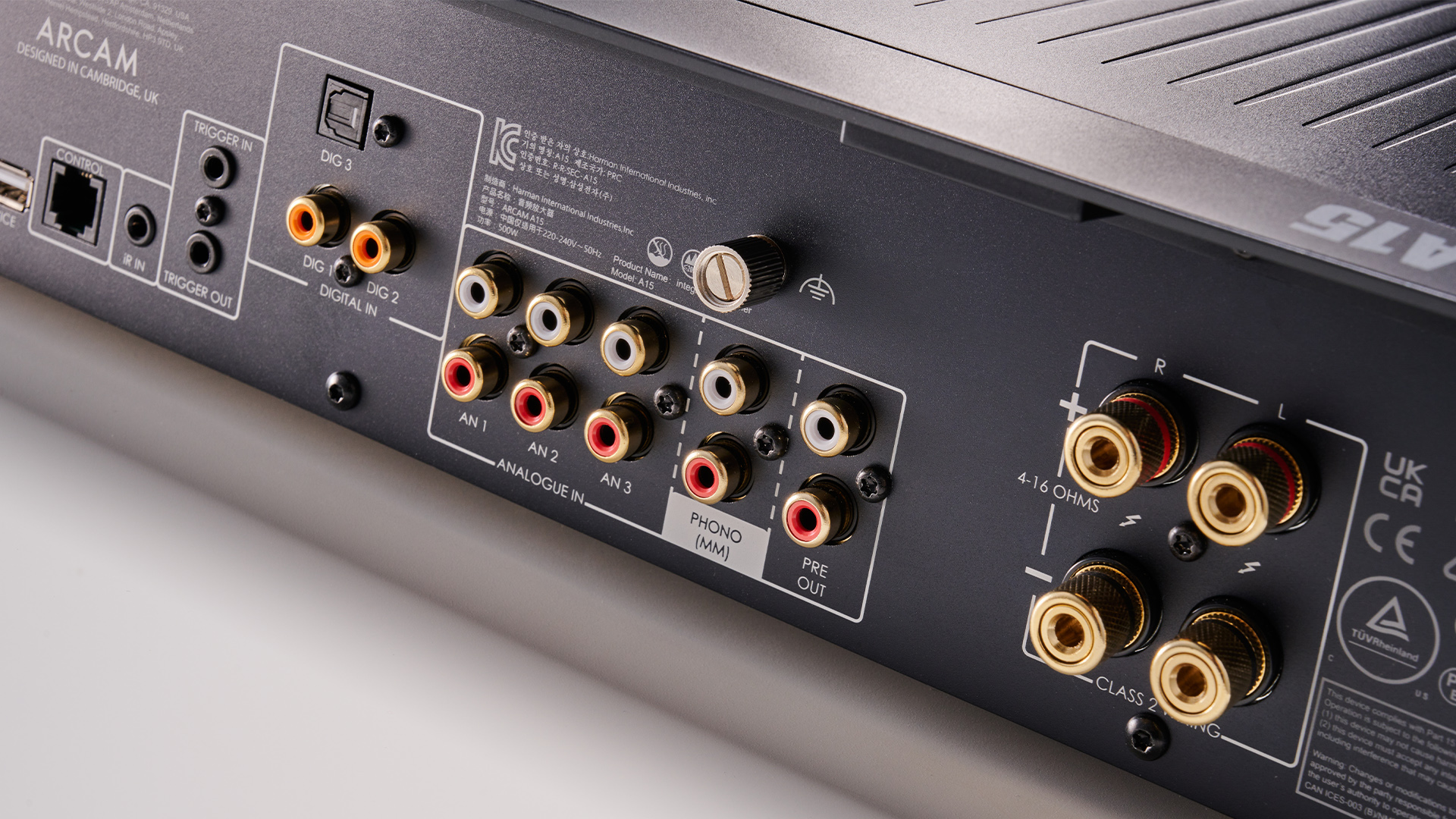
Arcam has been generous with the spec sheet and has tried to cover all bases. We doubt that this amplifier will ever get caught short in most set-ups given it has three line level inputs, a pair of coax digital and a single optical. The popular ESS ES9018 DAC chip is at the heart of the internal DAC module.
It would have been nice to have a USB option, but the lack of it isn’t a deal breaker for us. There is a preamp output for those who want to upgrade by adding an outboard power amplifier and a 3.5mm headphone output on the front panel.
Given the re-emergence of vinyl as a popular source in recent years it comes as no surprise to find that Arcam has included a moving magnet phono stage. But this amplifier isn’t only about looking backwards. It comes equipped with Bluetooth 5.2 and is compatible with aptX Adaptive, which opens up easy use with phones, tablets and laptops.
The latest hi-fi, home cinema and tech news, reviews, buying advice and deals, direct to your inbox.
We were pleasantly surprised to find that the Bluetooth is two-way, in that the A15 can receive Bluetooth signals but also send them out to a compatible wireless speaker or headphones.
Build

This amplifier is built well too. Its casework feels suitably sturdy and is finished nicely. The A15’s more powerful circuitry has forced Arcam to make its casing a little taller than the A5 and it gives the integrated a chunkier look. Previous Arcam efforts have always looked tidy but this new range with all-black finish and subtle yellow accents looks sleek and modern.
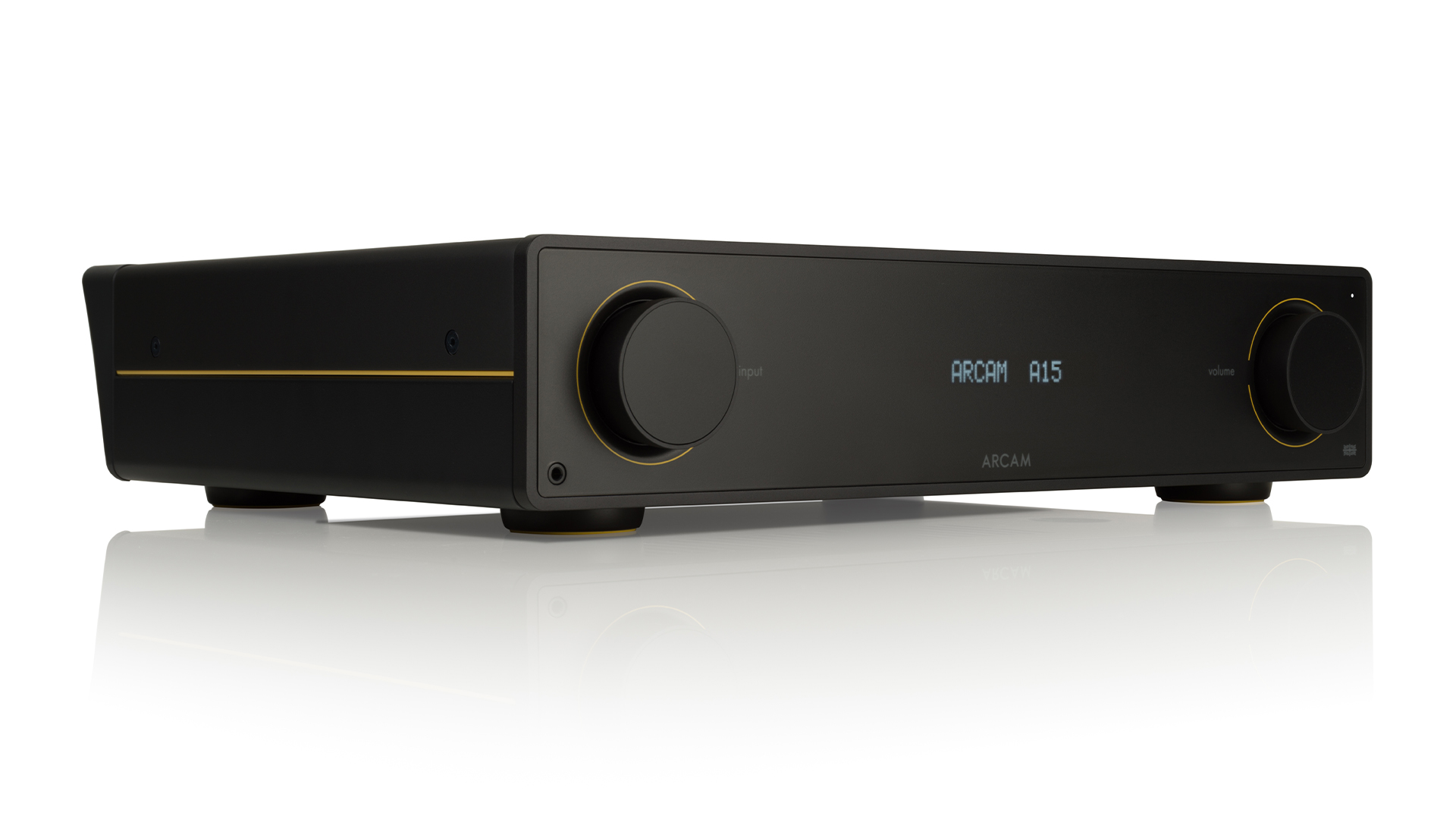
Type Integrated
Power 80W per channel
Phono stage Moving magnet
Inputs Line level x3, optical, coax x2
Outputs Pre-out
Bluetooth aptX Adaptive (two-way)
Headphone output? Yes (3.5mm)
Dimensions (hwd) 9.8 x 43.1 x 34.4cm
Weight 10kg
We like the clean-cut appearance and the symmetry of the controls. Those two large rotary dials are made of solid aluminium and turn with a lovely weighted and smooth movement. Around the back, you will find clearly labelled and sensibly located connections and a sturdy set of speaker terminals.
Our only aesthetic complaint is that the relatively large display is robbed of crispness thanks to the frosted look of the front panel.
We try the A15 in our reference set-up of Naim ND555/555 PS DR music streamer, Technics SL-1000R/Vertere Sabre record player and ATC SCM50 speakers as well as partnering it with more price-compatible products such as the Cambridge Audio CXN (V2) music streamer, Cyrus CDi CD player, KEF LS50 Meta speakers and PMC Prodigy 5 floorstanders.
We tested the junior A5 amplifier with the same kit and it worked well, but the step up in performance to the A15 is significant.
Sound
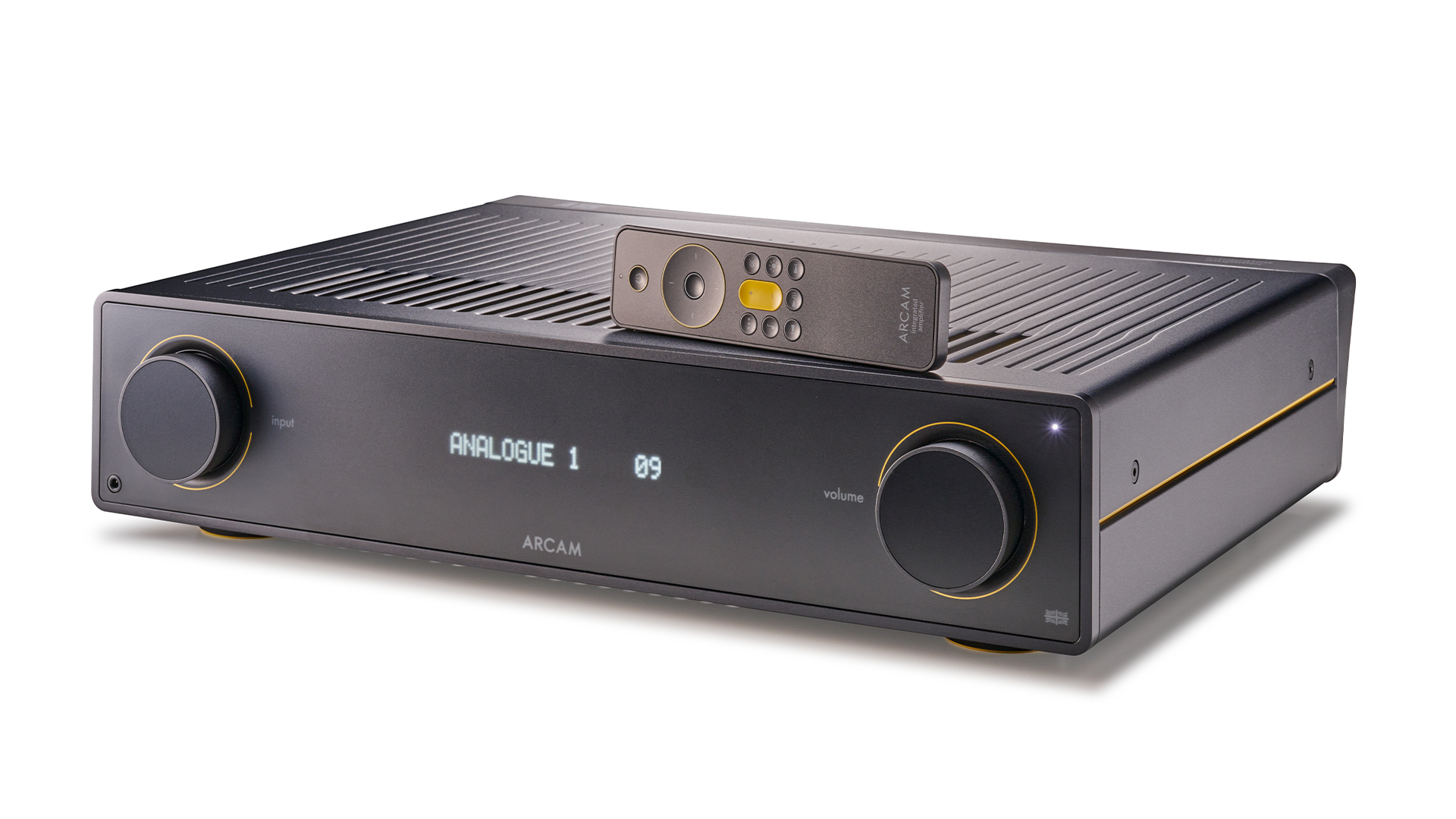
This is a wonderfully commanding and controlled performer. It excels in terms of grip and composure, delivering way more in terms of scale and authority when compared to its little brother. It also sounds more open and dramatic, as we discover when listening to Tchaikovsky’s 1812 Overture.
Here we’re impressed by the scale of the sound and the way this still compact design deals with the music’s savage dynamics. There is no shortage of punch and power, but this is no muscle-bound thug. This Arcam is insightful, tracking the music’s multitude of instrumental strands with skill.
Dynamic nuances are conveyed with finesse and we love the way it renders instrumental textures with such delicacy.
Stereo imaging is expansive, stable and nicely layered, and remains so as the musical complexity and volume level rises. While the A15 doesn’t have the sweetness or slight richness we so like in its cheaper sibling, it compensates with a higher level of clarity and precision. Tonally, it sounds neutral with no obvious emphasis in any part of the frequency range.
The A15 has this powerful, precise and poised character regardless of input chosen. Arcam was one of the pioneers of outboard digital-to-analogue converters back in the ’80s and that experience shines through in the performance of the A15’s digital section. It is crisp, insightful and engaging.
The sound through the digital inputs retains all the character of the analogue line stages but loses just a little of their transparency. Even so, in terms of dynamics and clarity, the digital module still matches some of the better affordable DACs that come our way.
Equally, while Bluetooth predictably fails to match any of the wired inputs in outright sound quality, it remains good enough for casual listening and that’s about as much as we can ask for.
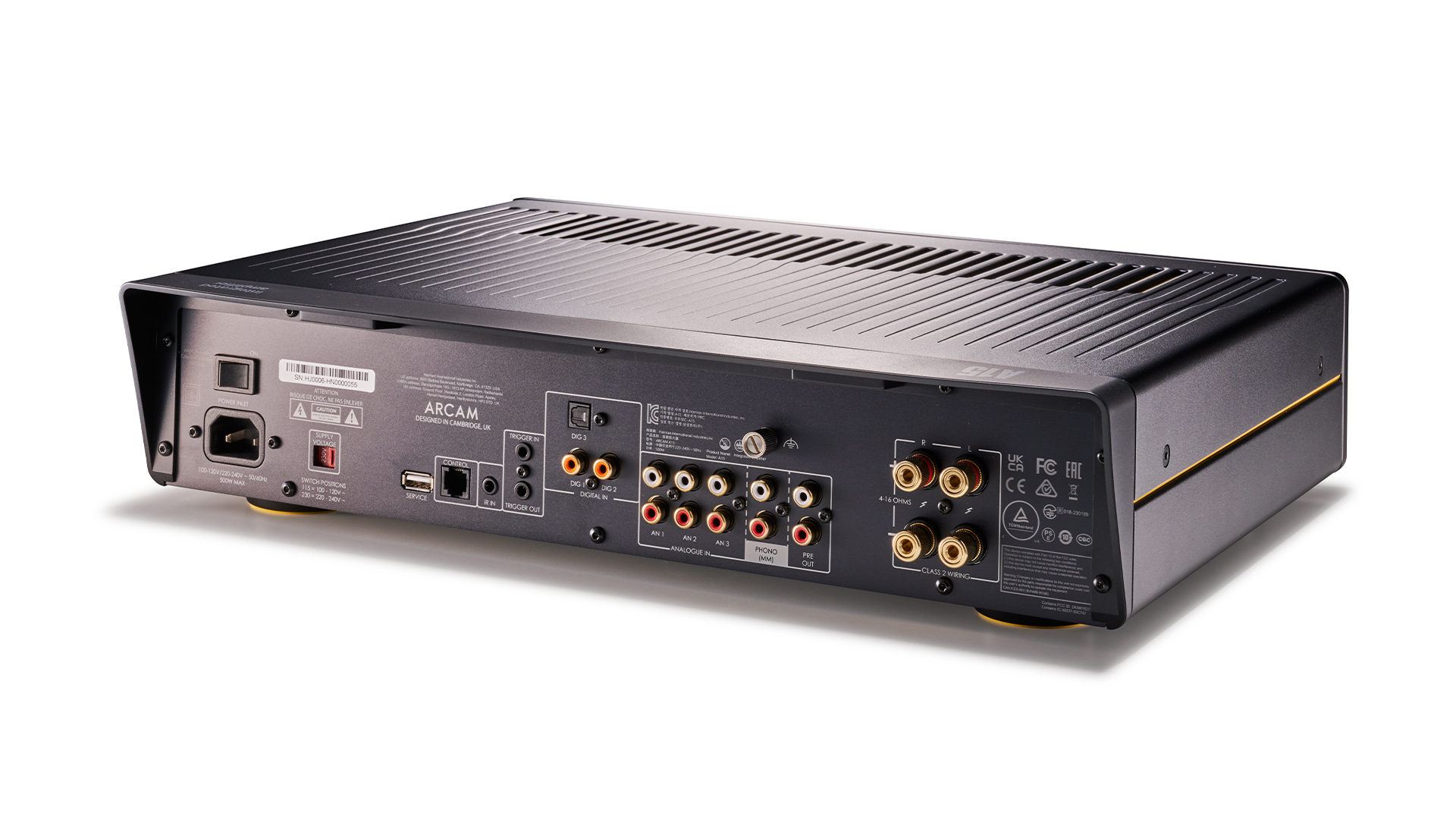
We have to give special mention to the A15’s phono stage and headphone output. Both these circuits tend to be tick-box exercises for most manufacturers, but judging by the evidence of our ears that’s not the case here. Bob Marley’s Catch A Fire on LP comes through with passion intact, the Arcam delivering the various reggae beats with confidence.
This is a musical sound, one that pulls us into the music until we sit there singing along with One Love. No one needs to hear that! The phono circuit is decently quiet and has enough gain to work well with a wide range of moving magnet cartridges (and most high-output moving coils).
Similarly, the headphone output retains the same informative and engaging character we hear from our speakers. We use Grado’s 325x, Sony’s MDR -Z1R and Focal’s Stellia, and the Arcam drives all of them with verve, dynamic expression and rhythmic integrity intact.
Verdict
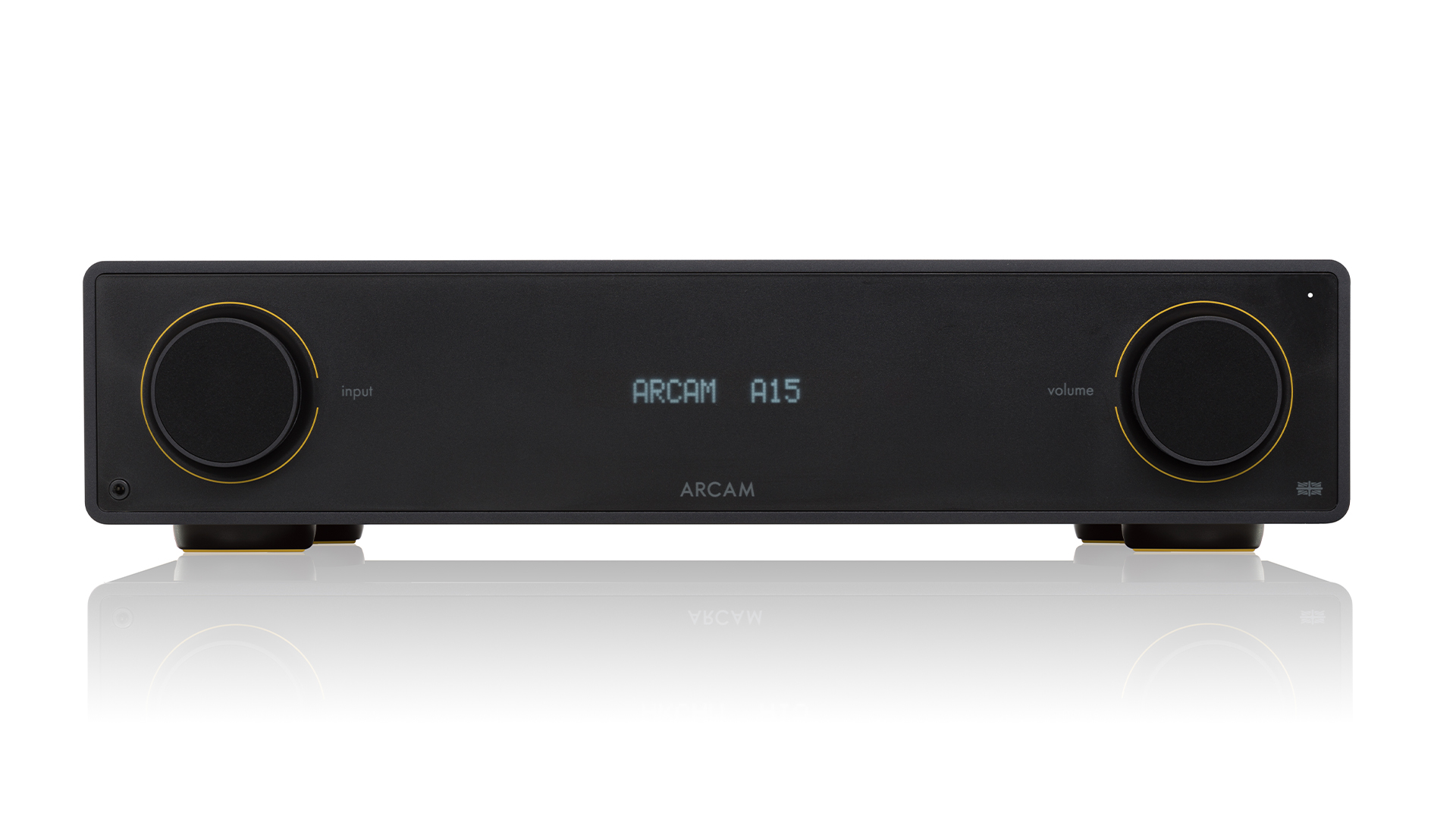
This is a second bullseye for Arcam. We worried a bit for the A15 once we heard how good the entry-level A5 sounded, but we needn’t have. This is a clear step better than its talented sibling, delivering a sound of greater clarity, scale and precision.
Sure, it isn’t quite as forgiving of partnering equipment, but at this level we would expect owners to take even more care over system matching. If the A15 falls into your budget make sure you give it a listen. We haven’t heard a better-sounding alternative for the money.
Review published: 2023. Review updated: November 2024.
SCORES
- Sound 5
- Build 5
- Features 5
MORE:
Read our review of the Cambridge Audio CXA81
Also consider the Rega Elex Mk4
Read our Arcam A5 review
Best stereo amplifiers: the best integrated amps you can buy
What Hi-Fi?, founded in 1976, is the world's leading independent guide to buying and owning hi-fi and home entertainment products. Our comprehensive tests help you buy the very best for your money, with our advice sections giving you step-by-step information on how to get even more from your music and movies. Everything is tested by our dedicated team of in-house reviewers in our custom-built test rooms in London, Reading and Bath. Our coveted five-star rating and Awards are recognised all over the world as the ultimate seal of approval, so you can buy with absolute confidence.
